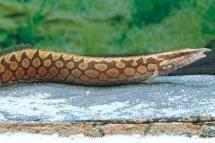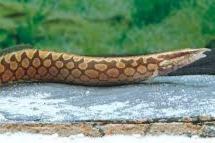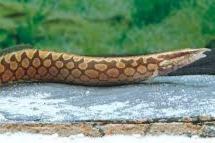Eel-Marble
Eel-Marble
check_circle Fast Shipping
check_circle Quality Products
check_circle Affordable Price
Reach out to us on ''available to order'' items via WhatsApp or email
Low stock: 2 left
Couldn't load pickup availability

Eel-Marble
package_2
Product Description
Product Description
Please Note: Due to variations within species, your item may not look identical to the image provided. Approximate size range may also vary between individual specimen
All our fish, shrimp and corals are bagged with fresh oxygen as well as a heat pack in winter.
When ordering livestock please select the box size and add it to your cart for accurate overnight (1-2 days) shipping costs. A small box can take 1-2 bags and a medium box 6 bags. One bag fits max 10 small (1-3cm) fish or max 2 medium (3-5cm) fish or max 1 large (>5cm) fish.
ONE SPECIES PER BAG. Eg: One bag of 10 neon tetra.
Marble Eel (Mastacembelus erythrotaenia)
Description:
-
Appearance:
- Body: Elongated and snake-like with a smooth, slimy surface. The body is cylindrical and tapers towards the tail.
- Color: Light cream or pale yellow base with dark, marbled patterns of brown or black. Patterns can vary from individual to individual.
- Size: Typically grows to about 12-18 inches (30-45 cm) in length, though larger specimens can reach up to 24 inches (60 cm).
-
Behavior:
- Activity: Nocturnal and more active during the night. During the day, they often hide in crevices or burrow in the substrate.
- Social Structure: Generally solitary and territorial. Can be aggressive towards other eels or fish that invade their space.
Care Requirements:
-
Tank Size:
- Minimum of 55 gallons (208 liters) for a single eel. Larger tanks are preferred to provide ample swimming space and hiding spots.
-
Water Parameters:
- Temperature: 75-82°F (24-28°C). They require stable, warm water conditions.
- pH: 6.5-7.5. Slightly acidic to neutral water is ideal.
- Hardness: Soft to moderately hard water. They can adapt to a range of hardness but prefer softer water.
- Filtration: Strong filtration is essential to maintain water quality. Ensure good water circulation but avoid strong currents that may stress the eel.
-
Tank Setup:
- Substrate: Soft sand or fine gravel. A substrate that allows for burrowing and is gentle on their delicate skin is recommended.
- Aquascaping: Provide plenty of hiding spots using rocks, driftwood, and PVC pipes or tubes. They need secure places to hide and feel safe.
- Lighting: Low to moderate lighting is sufficient. They are more active at night, so bright lighting is not necessary.
-
Diet:
- Primary Food: Carnivorous; feed a varied diet including live or frozen foods such as fish, shrimp, worms, and small mollusks. They may also accept high-quality carnivore pellets.
- Supplemental Food: Offer occasional treats like cut-up seafood or earthworms to add variety to their diet.
-
Behavioral Considerations:
- Compatibility: Best kept with other large, non-aggressive fish. Avoid mixing with small or aggressive species that may provoke or be eaten by the eel.
- Social Behavior: Solitary; do not keep multiple eels in the same tank unless the tank is very large and well-structured to reduce territorial disputes.
-
Tank Maintenance:
- Water Changes: Perform regular water changes (20-30% weekly) to maintain water quality and manage the bioload.
- Cleaning: Regularly clean the tank and remove any uneaten food or waste. Ensure the filtration system is effective and capable of handling the high bioload.
-
Health Care:
- Observation: Monitor for signs of stress or illness, such as changes in behavior, loss of appetite, or visible symptoms like skin lesions or discoloration.
- Treatment: Maintain optimal water conditions and consult an aquarium professional if any health issues arise. Address any signs of disease or stress promptly to ensure the health of your freshwater marble eel.


